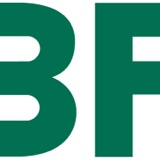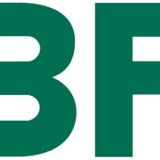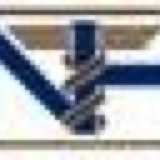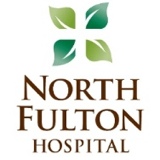Information
-
Audit Title
-
Client / Site
-
Conducted on
-
Prepared by
-
Location
-
Personnel
-
Follow Up to be performed before:
-
Name of person conducting survey:
Building and fire protection features are designed and maintained to minimize the effects of fire, smoke, and heat.
-
LS.02.01.10 EP 5 Doors are equipped with self closing and self latching devices. Gaps between meeting edges of door pairs are no more than 1/8" wide, and undercuts are no larger than 3/4 ".
-
Isolated/Facility Wide:
-
Corrective Action Plan:
-
Responsible Party:
-
Expected Date of Completion:
-
LS.02.01.10 EP 7 Doors requiring fire rating of 3/4 hour or longer are free of coverings, decorations, or other objects applied to the door face, with the exception of information signs.
-
Isolated/Facility Wide:
-
Corrective Action Plan:
-
Responsible Party:
-
Expected Date of Completion:
-
LS.02.01.10 EP8 Ducts that penetrate a 2-hour fire-rated separation are protected by dampers that are fire-rated for 1 1/2 hours. <br>
-
Isolated/Facility Wide:
-
Corrective Action Plan:
-
Responsible Party:
-
Expected Date of Completion:
The Organization provides and maintains fire alarm systems.
-
LS.02.01.34 EP1 The fire alarm signal automatically transmits to a Central Monitoring station as described in NFPA 72-1999; 5-2 <br>
-
Isolated/Facility Wide:
-
Corrective Action Plan:
-
Responsible Party:
-
Expected Date of Completion:
-
LS.02.01.34 EP 2 The master fire alarm control panel is located in a protected environment (an area enclosed with a 1-hour fire-rated walls and 3/4-hour fire-rated doors) that is continuously occupied or in an area with a smoke detector
-
Isolated/Facility Wide:
-
Corrective Action Plan:
-
Responsible Party:
-
Expected Date of Completion:
-
LS.02.01.34 EP 3 The remote ancillary annunciator panel is in a location approved by the local fire department or its equivalent.
-
Isolated/Facility Wide:
-
Corrective Action Plan:
-
Responsible Party:
-
Expected Date of Completion:
-
LS.02.01.34 EP 4 Pull stations are unobstructed
-
Isolated/Facility Wide:
-
Corrective Action Plan:
-
Responsible Party:
-
Expected Date of Completion:
The Clinic provides and maintains systems for extinguishing fires.
-
LS.02.01.35 EP 5 Sprinkler heads are not damaged and are free from corrosion, foreign materials and paint.
-
Isolated/Facility Wide:
-
Corrective Action Plan:
-
Responsible Party:
-
Expected Date of Completion:
-
LS.02.01.35 EP 6 There are 18" or more of open space maintained below the sprinkler deflector to the top of storage.
-
Isolated/Facility Wide:
-
Corrective Action Plan:
-
Responsible Party:
-
Expected Date of Completion:
-
LS.02.01.35 EP 8 The travel distance from any point to the nearest fire extinguisher is 75 ft. or less.
-
Isolated/Facility Wide:
-
Corrective Action Plan:
-
Responsible Party:
-
Expected Date of Completion:
The Organization has a written plan for managing the following
-
EC.01.01.01 EP 3 The environmental safety of patients and everyone else who enters the organization's facilities.
-
Isolated/Facility Wide:
-
Corrective Action Plan:
-
Responsible Party:
-
Expected Date of Completion:
-
EC.01.01.01 EP 4 The security of everyone who enters the organization's facilities.
-
Isolated/Facility Wide:
-
Corrective Action Plan:
-
Responsible Party:
-
Expected Date of Completion:
-
EC.01.01.01 EP 5 Hazardous materials and waste
-
Isolated/Facility Wide:
-
Corrective Action Plan:
-
Responsible Party:
-
Expected Date of Completion:
-
EC.01.01.01. EP 6 Fire Safety
-
Isolated/Facility Wide:
-
Corrective Action Plan:
-
Responsible Party:
-
Expected Date of Completion:
-
EC.01.01.01 EP 7 Medical Equipment
-
Isolated/Facility Wide:
-
Corrective Action Plan:
-
Responsible Party:
-
Expected Date of Completion:
-
EC.01.01.01 EP 8 Utility Systems
-
Isolated/Facility Wide:
-
Corrective Action Plan:
-
Responsible Party:
-
Expected Date of Completion:
The organization manages safety and security risks
-
EC.02.01.01 EP 1 The organization identifies safety and security risks associated with the environment of care that could affect patients, staff, and other people coming to the hospitals facilities<br><br>* Fall protection plan
-
Isolated/Facility Wide:
-
Corrective Action Plan:
-
Responsible Party:
-
Expected Date of Completion:
The organization prohibits smoking.
-
EC.02.01.03 EP 1 Smoking is not permitted in the organization. <br>
-
Isolated/Facility Wide:
-
Corrective Action Plan:
-
Responsible Party:
-
Expected Date of Completion:
The organization manages risks related to hazardous materials and waste
-
EC.02.02.01 EP 3 The organization has written procedures, including the use of precautions and personal protective equipment, to follow in response to hazardous material and waste spills or exposures.
-
Isolated/Facility Wide:
-
Corrective Action Plan:
-
Responsible Party:
-
Expected Date of Completion:
-
EC.02.02.01 EP 4 The organization implements its procedures in response hazardous material and waste spills or exposures<br><br>* Sharps containers are not more than 3/4 full
-
Isolated/Facility Wide:
-
Corrective Action Plan:
-
Responsible Party:
-
Expected Date of Completion:
-
EC.02.02.01 EP 5 The organization minimizes risks associated with selecting, handling, storing, transporting, using, and disposing of hazardous chemicals.<br><br>* Biohazard waste is properly disposed of<br><br>* Eye wash stations inspections are documented and meet ANSI z358.1-2009, are accessible, clean and working<br><br>* No more than a single 5-gallon storage container of flammable solvents is stored in the lab outside of a flammable materials cabinet or fire-rated safety can
-
Isolated/Facility Wide:
-
Corrective Action Plan:
-
Responsible Party:
-
Expected Date of Completion:
-
EC.02.02.01 EP 11 For managing hazardous materials and waste, the organization has the permits, licenses, manifests, and MSDS required by law and regulation.
-
Isolated/Facility Wide:
-
Corrective Action Plan:
-
Responsible Party:
-
Expected Date of Completion:
The organization manages fire risks
-
EC.02.03.01 EP 1 The organization minimizes the potential for harm from fire, smoke, and other products of combustion.<br><br>* (Electrical rooms locked at all times,should have "storeroom" type locksets. No storage allowed within 4' of transformers and breaker panels. No combustible materials in any room.<br>* Fire extinguishers are not obstructed<br>* Corridors are reduced to less than 3'
-
Isolated/Facility Wide:
-
Corrective Action Plan:
-
Responsible Party:
-
Expected Date of Completion:
-
EC.02.03.01 EP 9 and EP 10 The organization has a written fire response plan. The plan describes the specific roles of staff and licensed independent practitioners at and away from a fire's point of origin, including when and how to sound fire alarms, how to contain smoke and fire, how to use an extinguisher, and how to evacuate to areas of refuge.
-
Isolated/Facility Wide:
-
Corrective Action Plan:
-
Responsible Party:
-
Expected Date of Completion:
The organization conducts fire drills.
-
EC.02.03.03. EP1 The organization conducts fire drills once per shift per quarter in each building defined as a health care occupancy. <br>
-
Isolated/Facility Wide:
-
Corrective Action Plan:
-
Responsible Party:
-
Expected Date of Completion:
-
EC.02.03.03 EP5 The organization critiques fire drills to evaluate fire safety equipment, fire safety building features, and staff response to fire. <br>
-
Isolated/Facility Wide:
-
Corrective Action Plan:
-
Responsible Party:
-
Expected Date of Completion:
The organization maintains fire safety equipment and fire safety building features.
-
EC.02.03.05 EP 1 At least quarterly, the organization tests supervisory signal devices (except valve tamper switches). <br>
-
Isolated/Facility Wide:
-
Corrective Action Plan:
-
Responsible Party:
-
Expected Date of Completion:
-
EC.02.03.05 EP 2 Every 3 months, the organization tests valve tamper switches and water-flow devices. <br>
-
Isolated/Facility Wide:
-
Corrective Action Plan:
-
Responsible Party:
-
Expected Date of Completion:
-
EC.02.03.05 EP 3 Every 12 months, the organization tests duct detectors, electromechanical releasing devices, heat detectors, manual fire alarm boxes, and smoke detectors. <br>
-
Isolated/Facility Wide:
-
Corrective Action Plan:
-
Responsible Party:
-
Expected Date of Completion:
-
EC.02.03.05 EP 4 Every 12 months, the organization tests visual and audible fire alarms, including speakers. <br>
-
Isolated/Facility Wide:
-
Corrective Action Plan:
-
Responsible Party:
-
Expected Date of Completion:
-
EC.02.03.05 EP 5 Every quarter, the organization tests fire alarm equipment for notifying off-site fire responders. <br>
-
Isolated/Facility Wide:
-
Corrective Action Plan:
-
Responsible Party:
-
Expected Date of Completion:
-
EC.02.03.05 EP 6 For automatic sprinkler systems: Every week, the organization tests fire pumps under no-flow conditions. <br>
-
Isolated/Facility Wide:
-
Corrective Action Plan:
-
Responsible Party:
-
Expected Date of Completion:
-
EC.02.03.05 EP 7 For automatic sprinkler systems: Every 6 months the organization tests water-storage tank high-and low-water level alarms. The completion date is documented
-
Isolated/Facility Wide:
-
Corrective Action Plan:
-
Responsible Party:
-
Expected Date of Completion:
-
EC.02.03.05 EP 8 For automatic sprinkler systems: Every month during cold weather, the organization test water - storage tank temperature alarms. The completion date of the test is documented.
-
Isolated/Facility Wide:
-
Corrective Action Plan:
-
Responsible Party:
-
Expected Date of Completion:
-
EC.02.03.05 EP9 For automatic sprinkler systems: Every 12 months, the organization tests main drains at system low point or at all system risers. <br>
-
Isolated/Facility Wide:
-
Corrective Action Plan:
-
Responsible Party:
-
Expected Date of Completion:
-
EC.02.03.05 EP10 For automatic sprinkler systems: Every quarter, the organization inspects all fire department water supply connections. <br>
-
Isolated/Facility Wide:
-
Corrective Action Plan:
-
Responsible Party:
-
Expected Date of Completion:
-
EC.02.03.05 EP11 For automatic sprinkler systems: Every 12 months, the organization tests fire pumps under flow. <br>
-
Isolated/Facility Wide:
-
Corrective Action Plan:
-
Responsible Party:
-
Expected Date of Completion:
-
EC.02.03.05 EP12 Every 5 years, the organization conducts water-flow tests for standpipe systems. <br>
-
Isolated/Facility Wide:
-
Corrective Action Plan:
-
Responsible Party:
-
Expected Date of Completion:
-
EC.02.03.05 EP13 Every 6 months, the organization inspects any automatic fire-extinguishing systems in a kitchen. <br>
-
Isolated/Facility Wide:
-
Corrective Action Plan:
-
Responsible Party:
-
Expected Date of Completion:
-
EC.02.03.05 EP 14 Every 12 months, the organization tests carbon dioxide and other gaseous automatic fire-extinguishing systems. The completion date of the test is documented.
-
Isolated/Facility Wide:
-
Corrective Action Plan:
-
Responsible Party:
-
Expected Date of Completion:
-
EC.02.03.05 EP15 At least monthly, the organization inspects portable fire extinguishers. <br>
-
Isolated/Facility Wide:
-
Corrective Action Plan:
-
Responsible Party:
-
Expected Date of Completion:
-
EC.02.03.05 EP16 Every 12 months, the organization performs maintenance on portable fire extinguishers. <br>
-
Isolated/Facility Wide:
-
Corrective Action Plan:
-
Responsible Party:
-
Expected Date of Completion:
-
EC.02.03.05 EP 17 The organization conducts hydrostatic tests on standpipe occupant hoses 5 years after installation and 3 years thereafter. Completion date is documented
-
Isolated/Facility Wide:
-
Corrective Action Plan:
-
Responsible Party:
-
Expected Date of Completion:
-
EC.02.03.05 EP18 The organization operates fire and smoke dampers 1 year after installation (commencing Jan 2010) and then at least every 6 years to verify that they fully close. <br>
-
Isolated/Facility Wide:
-
Corrective Action Plan:
-
Responsible Party:
-
Expected Date of Completion:
-
EC.02.03.05 EP19 Every 12 months, the organization tests automatic smoke-detection shutdown devices for air-handling equipment. <br>
-
Isolated/Facility Wide:
-
Corrective Action Plan:
-
Responsible Party:
-
Expected Date of Completion:
-
EC.02.03.05 EP20 Every 12 months, the organization tests sliding and rolling fire doors for proper operation and full closure. The completion date of the tests is documented. <br>
-
Isolated/Facility Wide:
-
Corrective Action Plan:
-
Responsible Party:
-
Expected Date of Completion:
The organization inspects, tests, and maintains medical equipment
-
EC.02.04.03 EP 2 The organization inspects, tests and maintains all life-support equipment. Activities are documented<br><br>* Equipment within PM schedule
-
Isolated/Facility Wide:
-
Corrective Action Plan:
-
Responsible Party:
-
Expected Date of Completion:
The organization manages risks associated with its utility systems.
-
EC.02.05.01 EP 5 The organization minimizes pathogenic biological agents in cooling towers, domestic hot and cold water systems, and other aerosolizing water systems.<br><br>* No standing H2O near air intakes.<br>* Exhaust vents are 30 or > from air intakes
-
Isolated/Facility Wide:
-
Corrective Action Plan:
-
Responsible Party:
-
Expected Date of Completion:
-
EC.02.05.01 EP 6 (CLD) In areas designed to control airborne contaminants, the ventilation system provides appropriate pressure relationships, air-exchange rates, and filtration efficiencies.
-
Isolated/Facility Wide:
-
Corrective Action Plan:
-
Responsible Party:
-
Expected Date of Completion:
-
EC.02.05.01 EP 8 The organization labels utility system controls to facilitate partial or complete emergency shutdowns.
-
Isolated/Facility Wide:
-
Corrective Action Plan:
-
Responsible Party:
-
Expected Date of Completion:
-
EC.02.05.01 EP10 The organization procedures address shutting off the malfunctioning system and notifying staff in affected areas. <br>
-
Isolated/Facility Wide:
-
Corrective Action Plan:
-
Responsible Party:
-
Expected Date of Completion:
The organization has a reliable emergency electrical power source.
-
EC.02.05.03 EP1 Organization provides emergency power for the following utilities and systems: Alarm systems, as required by the Life Safety Code. <br>
-
Isolated/Facility Wide:
-
Corrective Action Plan:
-
Responsible Party:
-
Expected Date of Completion:
-
EC.02.05.03 EP2 Exit route and exit sign illumination, as required by the Life Safety Code. <br>
-
Isolated/Facility Wide:
-
Corrective Action Plan:
-
Responsible Party:
-
Expected Date of Completion:
-
EC.02.05.03 EP3 Emergency communication systems, as required by the Life Safety Code. <br>
-
Isolated/Facility Wide:
-
Corrective Action Plan:
-
Responsible Party:
-
Expected Date of Completion:
-
EC.02.05.03 EP5 Equipment that could cause patient harm when it fails, including life-support systems; blood, bone, and tissue storage systems; medical air compressors; and medical and surgical vacuum systems. <br>
-
Isolated/Facility Wide:
-
Corrective Action Plan:
-
Responsible Party:
-
Expected Date of Completion:
-
EC.02.05.03 EP6 Areas in which loss of power could result in patient harm, including operating rooms, recovery rooms, obstetrical delivery rooms, nurseries, and urgent care areas. <br>
-
Isolated/Facility Wide:
-
Corrective Action Plan:
-
Responsible Party:
-
Expected Date of Completion:
The organization inspects, tests, and maintains utility systems
-
EC.02.05.05 EP 1 The organization tests utility system components on the inventory before initial use. The completion date of the test is documented<br>* Generator switch gear in "auto"
-
Isolated/Facility Wide:
-
Corrective Action Plan:
-
Responsible Party:
-
Expected Date of Completion:
The organization inspects, tests, and maintains emergency power systems
-
EC.02.05.07 EP 4. Twelve times a year, at intervals of not less than 20 days and not more than 40 days, the hospital tests each emergency generator for at least 30 continuous minutes.
-
Isolated/Facility Wide:
-
Corrective Action Plan:
-
Responsible Party:
-
Expected Date of Completion:
The organization collects information to monitor conditions in the environment (EC Committee)
-
EC.04.01.01 EP 1 The organization establishes a process (es) for continually monitoring, internally reporting, and investigating the following:<br><br>* injuries to patients or others within the hospital facilities<br>* Occupational illnesses and staff injuries<br>* Incidents of damage to its property or the property of others<br>* Security incidents involving patients, staff, or others within its facilities<br>* Hazardous materials and waste spills and exposures<br>* Fire safety management problems, deficiencies, and failures<br>* Medical or Lab equipment management problems, failures, and use errors<br>* Utility systems management problems, failures, or use errors
-
Isolated/Facility Wide:
-
Corrective Action Plan:
-
Responsible Party:
-
Expected Date of Completion:
-
EC.04.01.01. EP 15 Every 12 months, the organization evaluates each environment of care management plan, including a review of the plan's objectives, scope, performance, and effectiveness.
-
Isolated/Facility Wide:
-
Corrective Action Plan:
-
Responsible Party:
-
Expected Date of Completion:















